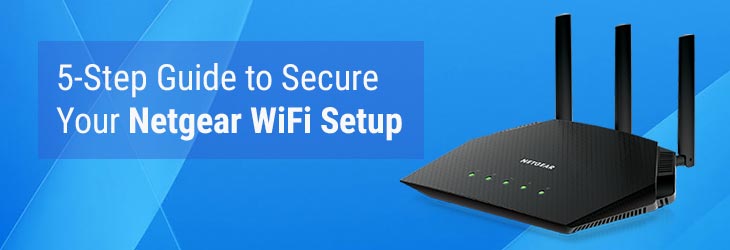Do you own a Netgear WiFi setup and looking to protect it from potential threats? Well, in that case, you have stumbled upon the right blog. Here we have covered some simple yet efficient tips on how to secure your home WiFi network from getting hacked and protect your important information from getting leeched. Let’s get started!
How to Secure Netgear WiFi Setup?
Walking through the steps below will make you understand how you can add an additional layer of security to your Netgear WiFi setup. Read on.
1. Change Default Credentials
You may be putting your WiFi at risk if have ignored changing the default username and password of your router after completing the Nighthawk router setup. FYI, Netgear has allowed its users to configure their routers using preset admin details. And, if the details have not been changed after completing the setup of the router, anyone can easily get access to them. Thus, you are suggested to give your router a strong username and password for protecting it from various potential threats.
You can, for instance, add special characters, numbers, or digits to your password for making it hard-to-crack.
2. Update Firmware
This is another important step you must execute for protecting your Netgear WiFi setup from being hacked. Firmware updates bring various bug fixes and the addition of new features to your device. This way, your device becomes more efficient to work and there will be no loophole for hackers to get access to the device.
Although you can easily update the firmware of your device by accessing the routerlogin.net setup page, we suggest you execute the process keeping the model number of your WiFi router in mind. Because updating a wrong or corrupted firmware version can make your router nonperforming. And, of course, you won’t be interested to find your Netgear WiFi setup in such a situation.
3. Create Guest Network
Many Netgear routers support creating a guest network for people visiting your home and demanding your WiFi admin details. Creating a guest network means, you can set up a different username and password for your guests. This way, you can prevent yourself from sharing your WiFi network admin details with every other person. Apart from securing your Netgear WiFi setup, this step will help you protect your WiFi network from malware or virus as well, if any of your guests have malicious content on their smartphones or tablets.
4. Disable Remote Access, WPS, and UPnP
Netgear routers also flaunt features like Remote Access, WPS, UPnP. Although all these features are offered to help users make the most of their WiFi devices, at times these can also lead to weakening your WiFi security. So, if you are not using any of these features, you are suggested to disable them. This will also help you protect your WiFi and make it more secure.
5. Hide the Network Name
At the time of setting up your Netgear router, you will be requested to give your network a name that will be publicly visible. This is known as the SSID of your device. There is no need to broadcast the SSID of your WiFi network if you want your router’s WiFi name to be hidden from the network list of people in your area. This way, your WiFi will be at no risk.
Bonus: If your Netgear WiFi not working in a proper manner, the hacks listed above will also help in boosting the performance of your WiFi. This means, with the implementation of these steps, you are going to enjoy the best of both worlds.
Verdict
Our 5-step guide on protecting a Netgear WiFi setup ends here. Just in case you need any more guidance on securing your home WiFi network, you can anytime reach out to our technical experts for quick assistance. We wish you have a speedier and secure WiFi experience! Stay tuned!

